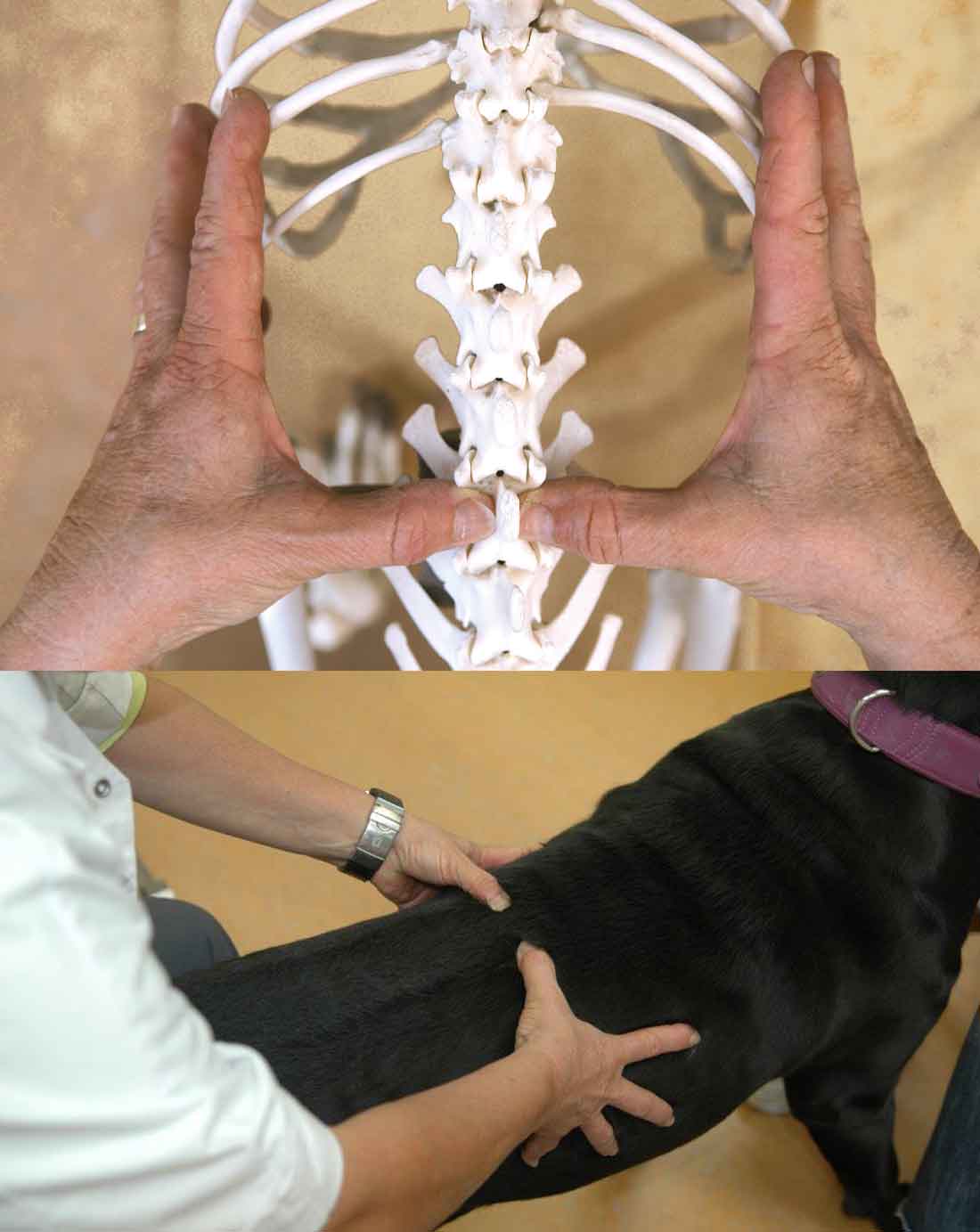Indications for Aharon orthomanual veterinary medicine
Indications
- Orthopaedic patients
- Lame animals, young and old, acute or chronic
- Animals with arthrosis and degenerative joint disease (DJD)
- Neurological patients
- Animals with intervertebral disc disease (IVDD)
- Animals with weakness in the fore or hind limbs
- Patients with pain in the neck, back or lower back
- Patients with lumbosacral stenosis or instability (DLSS)
- Animals with behavioural problems like restlessness, anxiety and aggression (possibly related to pain)
- Working and sporting dogs (preventive orthomanual sport check-ups)
- Puppies (preventive and educational)
- Senior pets (preventive and educational)

Pain
Pain in the neck, back and fore and hind limbs is common in animals. Pain, lameness, paralysis, difficulty getting up, stair climbing and jumping (for example, into the car) can be caused, among other things, by misalignment of the vertebrae and joints. Such irritation affects the portion of the nervous system around the misaligned vertebra (or joint), leading to pain and loss of function. Some behavioural problems, such as anxiety, restlessness and aggression in dogs, can be ascribed to a (correctable) misalignment of the vertebrae.
Method of treatment
Orthomanipulation, is non-invasive and animal-friendly. The main diagnostic tools are inspection and palpation, focused on the symmetry of the spine and positions of the joints and components of the skeleton. Pets with vertebral and joint misalignment can experience pain, contracture, and functional limitations. Dr Aharon identifies and adjusts misalignments, to allow the spine and joints to regain a more optimal anatomical position. That allows the nervous system to recover and promotes relaxation of muscular spasms.
The Aharon Method has been demonstrated effective for treating pets with a spectrum of neurological and orthopaedic complaints as well as for preventive purposes, for example in service and working animals, puppies and senior pets. This method has been proven effective in many animals, over more than 20 years of research and experience. One or two treatments are often sufficient. A check-up after 3 months is advisable.
